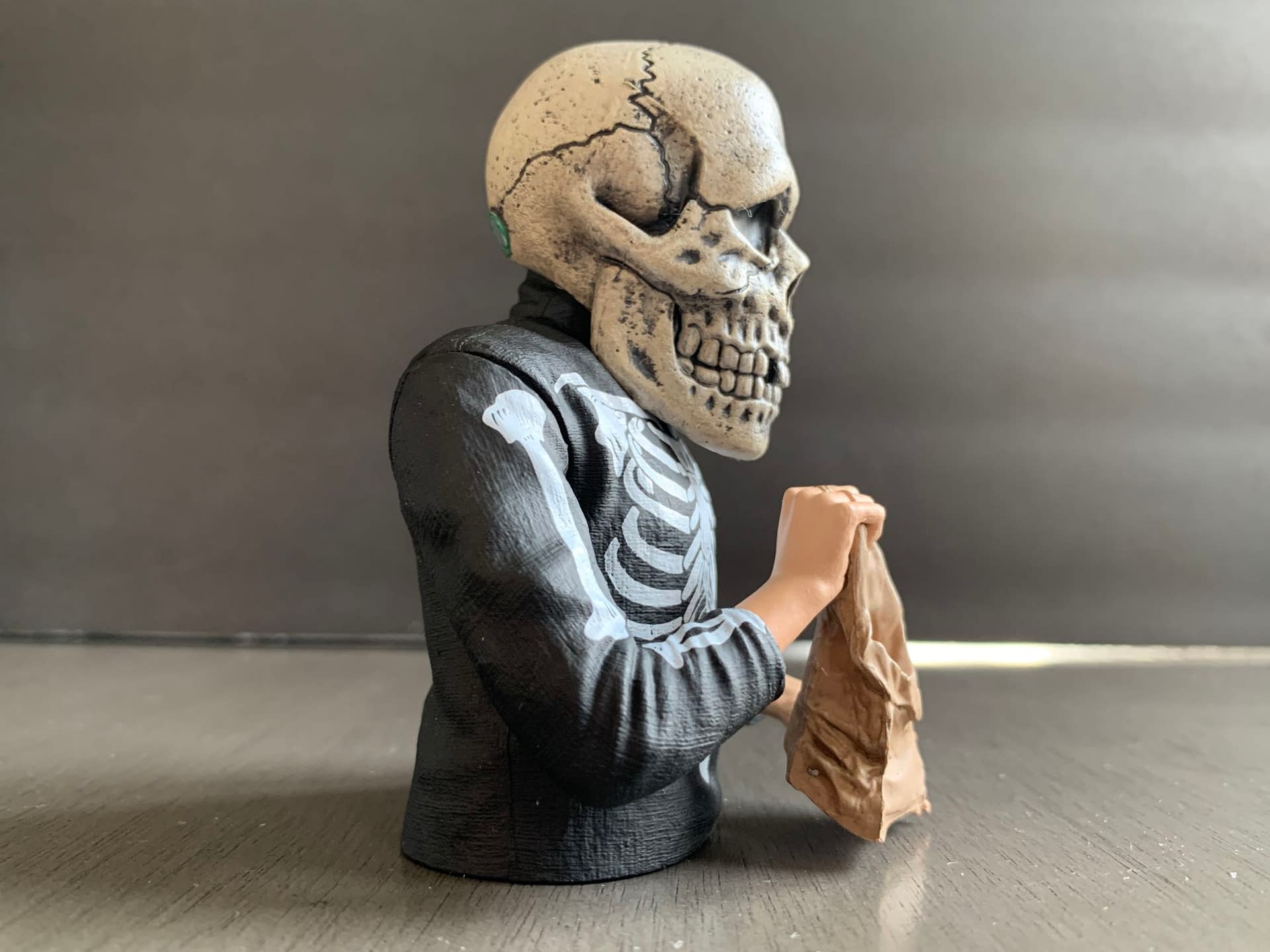
It’s a shame so much is missing, as the film does seem a little slight and underdeveloped in places. The impressive restoration included on this disc was taken largely from a BFI nitrate print and a couple of other sources to fix some damaged and missing frames. The original negative of the film burnt in 1925 though and no prints of the premiere release version remain. The German premiere release of the film ran around 20 minutes longer than the version we have here. There was more to the film in general though, originally, which might go some way to suggest why the three stories are so irregularly lengthed (the first is over 40 minutes, the second shorter than this and the final only a few minutes in length). Leni ran out of money, largely due to the shoot coinciding with hyperinflation and the collapse of the German economy. The script had a fourth story (that of Rinaldo Rinaldini) but it was never shot. You’ll notice there are four figures in the wax museum. The final story is more a short vignette that sees the waxwork of Jack the Ripper (Werner Krauss – named Spring-Heeled Jack in the captions but not on the waxwork inscription) come alive and chase the writer and waxwork owner’s daughter in their dreams. Ivan discovers this after he’s snatched a new bride (Belajeff) from her groom (Dieterle), leading the Czar to lose his mind. In revenge, the poisoner writes Ivan’s name on a new hourglass. However, when the poisoner takes pity on one victim, Ivan orders him to be the next to perish. His favourite method is having his chief poisoner concoct a potion that will be timed perfectly to kill the victim as soon as the sands in their named hourglass have all fallen. The tyrannical Czar of Russia takes great pleasure in torturing and killing those he dislikes. The second story tells of Ivan the Terrible (Conrad Veidt).

The Caliph, however, has headed out to find the baker’s wife and have his wicked way with her. That night, the baker argues with his wife about their station in life and vows to make her rich by stealing the ‘wishing ring’ from the Caliph, heading off into the palace under the shadow of darkness.

The Vizier heads back to the Caliph to tell him of this beauty, which piques his interest. He asks his Grand Vizier (Paul Biensfeldt) to kill whoever’s responsible, but when the Vizier meets the baker’s attractive wife (Belajeff) he is distracted from his job to execute the baker (Dieterle).

The first story sees Emil Jannings play Harun al Raschid, the rotund Caliph of Baghdad, who is troubled by smoke coming from the bakery below his palace. The owner’s daughter (Olga Belajeff) hovers over the writer’s shoulder and the pair imagine themselves in the stories being concocted. The owner of the waxworks (John Gottowt) ushers him in and the writer gets straight to work. Waxworks is an anthology film that is framed by the story of a writer/poet (William Dieterle) who heads to a funfair, replying to a newspaper advert looking for a talented author to come up with imaginative stories to accompany the main exhibits in a wax museum. I picked up a screener to see how it matched up to his later work. Some have even suggested the final portion of the film helped pave the way for the slasher movie, with its relentless, soulless, silent, murderous villain.Īfter greatly admiring The Man Who Laughed when reviewing Eureka’s recent Blu-ray release of the film, I was thrilled to hear the label were next setting their sights on Waxworks. Its style and techniques are believed to have inspired a wide range of films, such as Eisenstein’s Ivan the Terrible, Mystery of the Wax Museum (1933) The Scarlet Empress (1934), The Wizard of Oz (1939), Dead of Night (1945), House of Wax (1953) and Black Sabbath (1963). On top of leading Leni to fame and fortune in the US, Waxworks was a highly regarded late entry into the German Expressionist movement. Leni’s career in Hollywood was very successful too, whilst it lasted, bringing the popular and highly regarded The Cat and the Canary (1927) and The Man Who Laughed (1928) before his untimely death in 1929, aged 44.

It helped get him noticed in the industry as a director and was likely the major factor that got him headhunted by Universal’s Carl Laemmle. He began directing his own films in 1917, but 1924’s Waxworks was his first major box-office success. Paul Leni’s film career began in art direction and production design on a number of films, including some for Lubitsch, Alexander Korda and Mikhail Kertész (a.k.a. Starring: Emil Jannings, Conrad Veidt, Werner Krauss, William Dieterle, Olga Belajeff, John Gottowt Directors: Paul Leni, Leo Birinsky (exact contribution unclear)


 0 kommentar(er)
0 kommentar(er)
